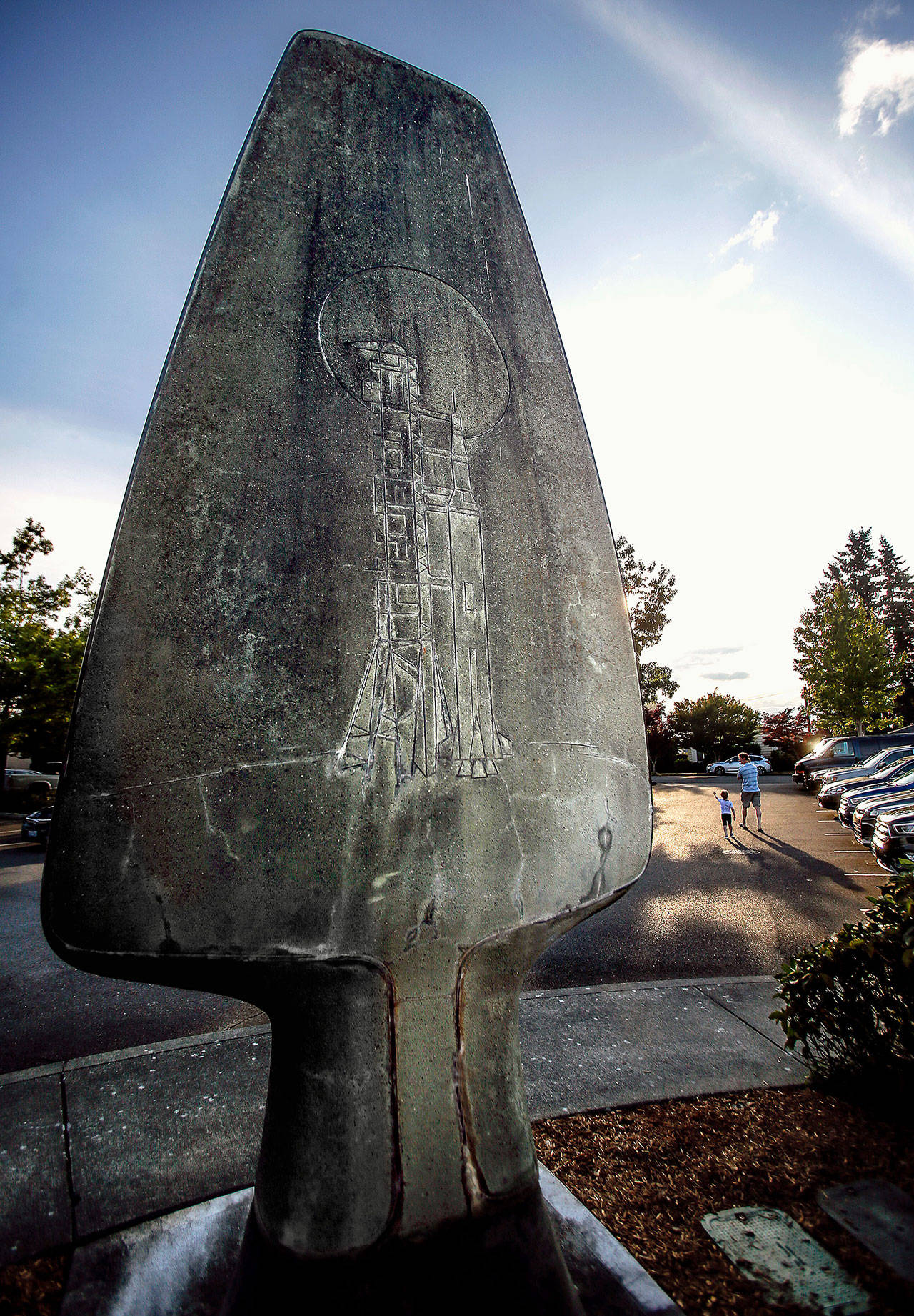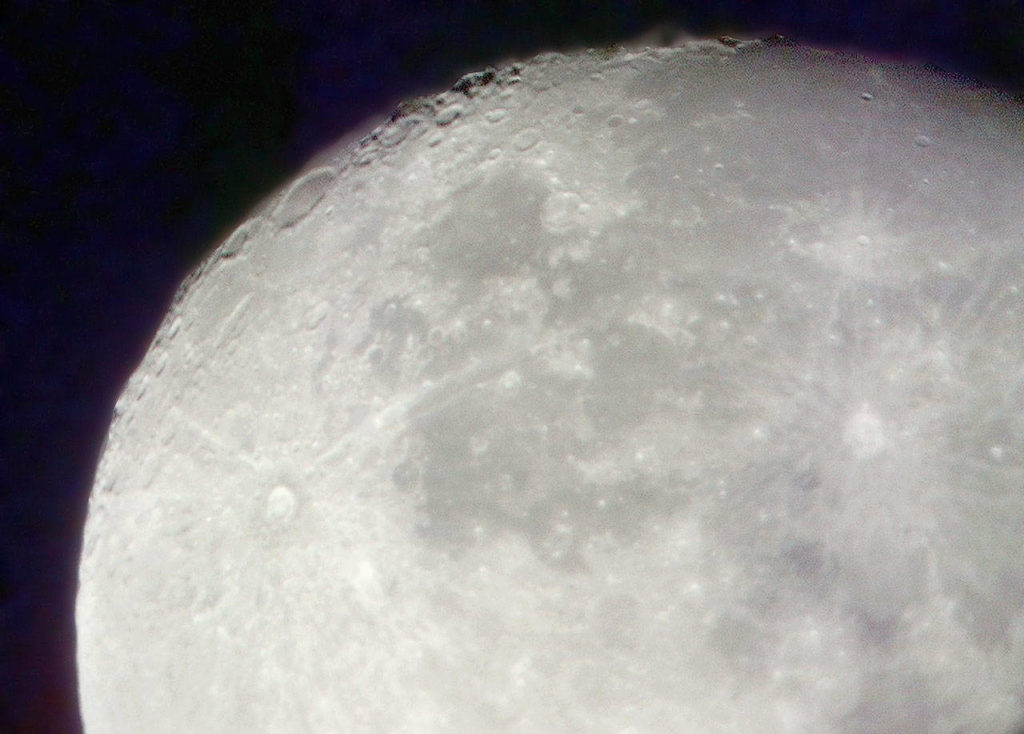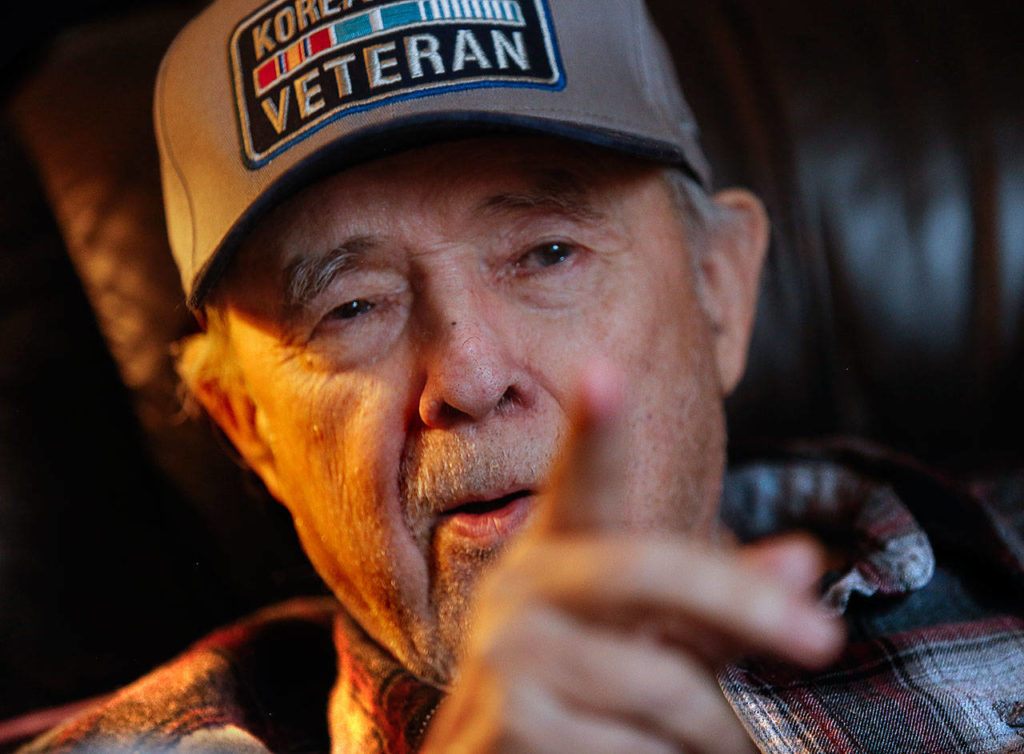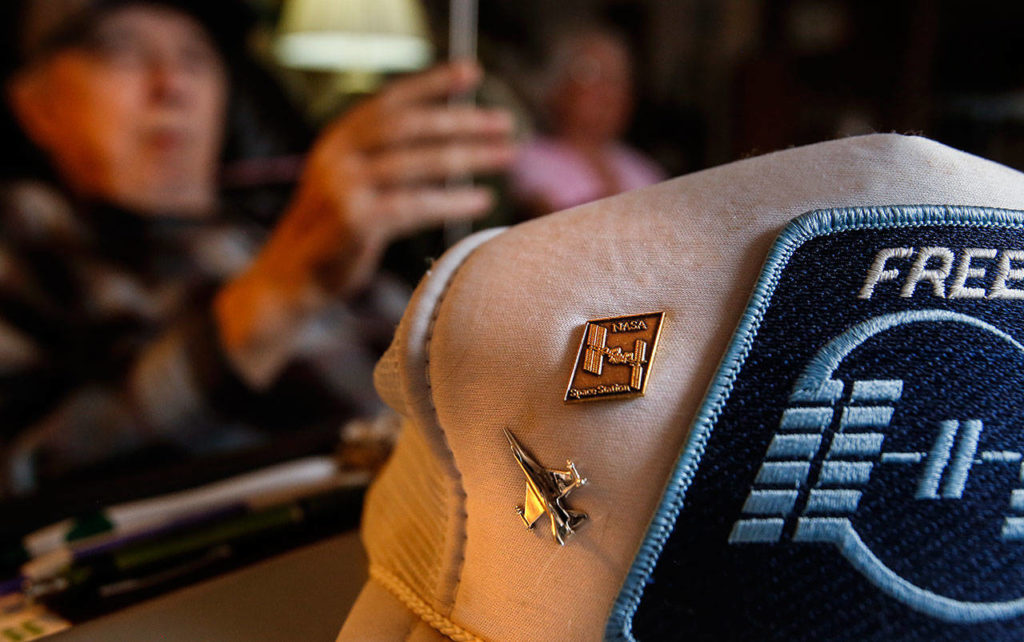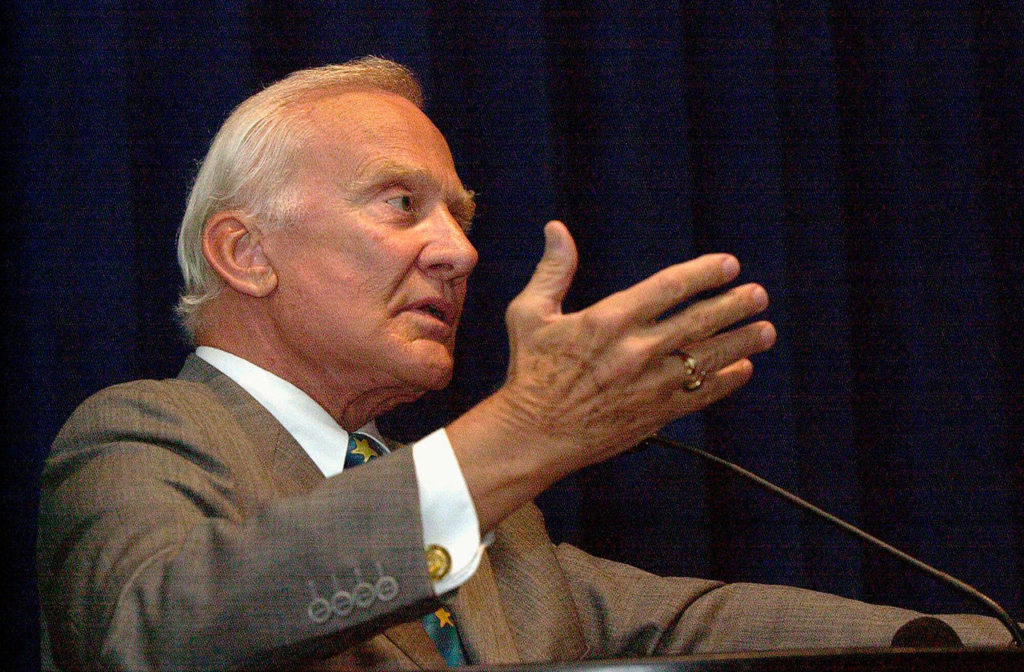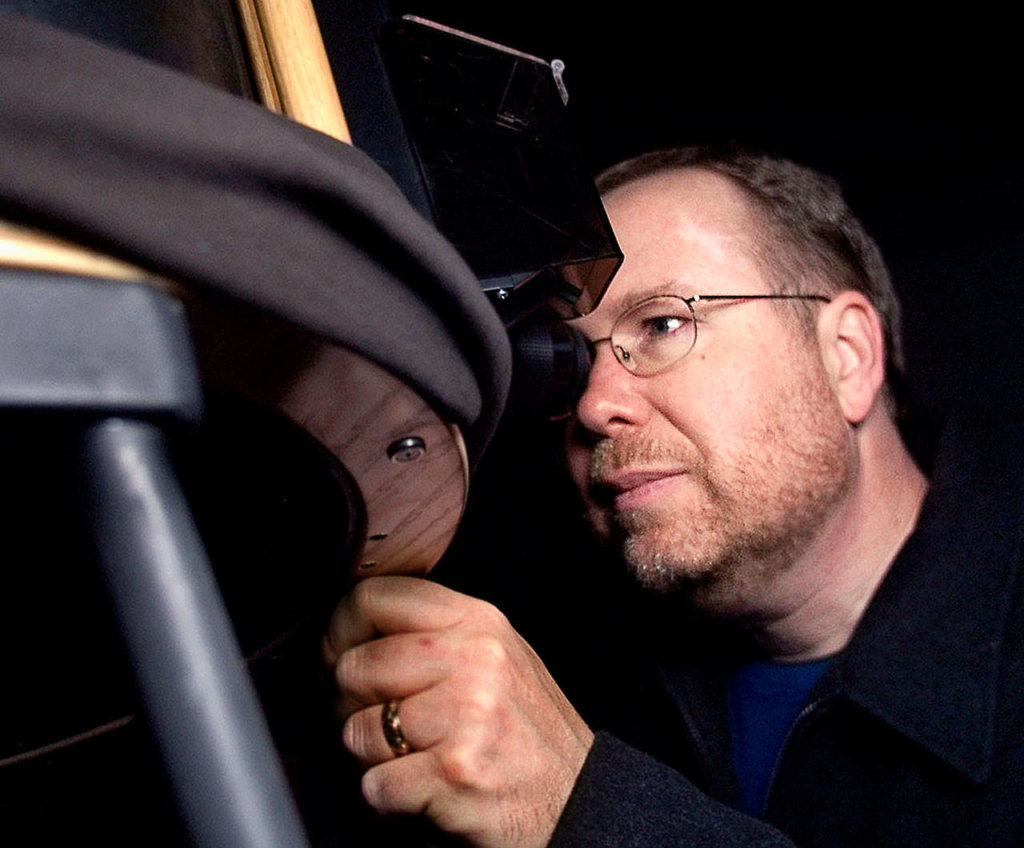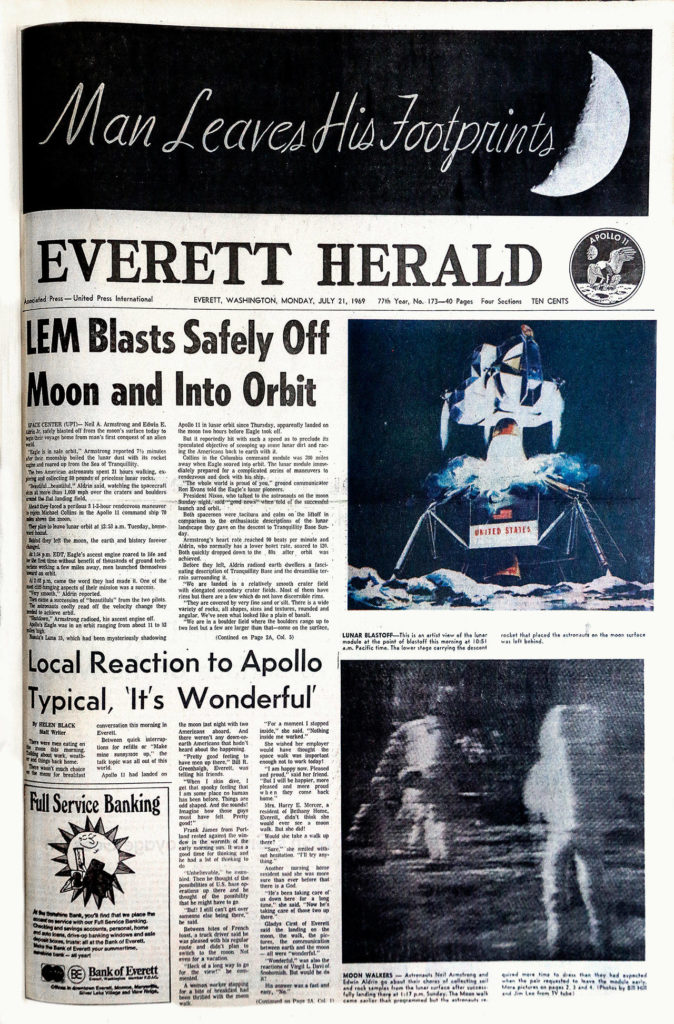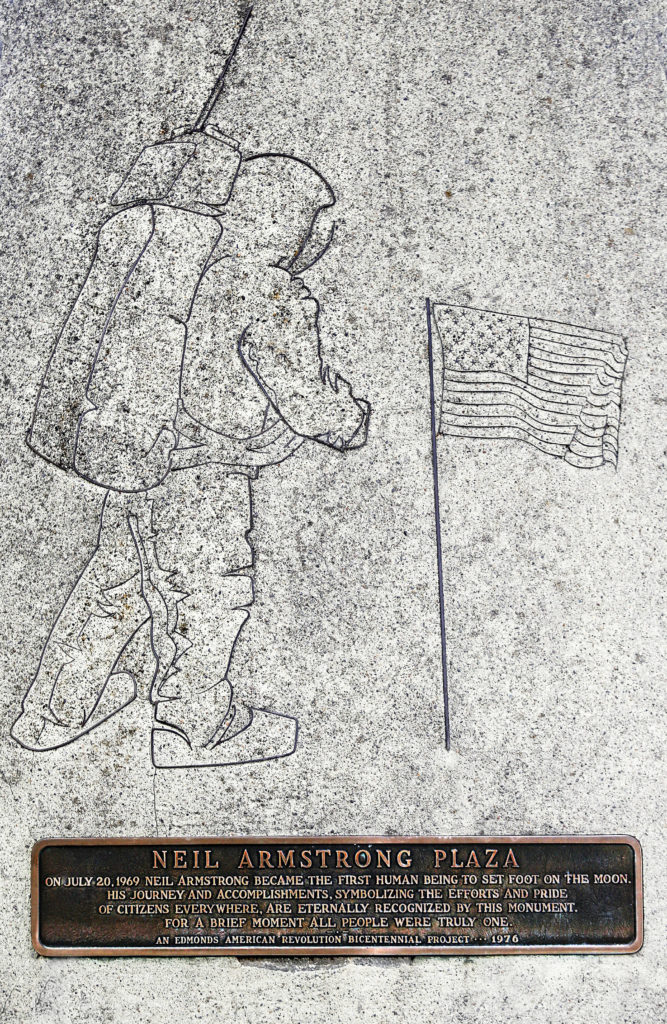Edwin “Buzz” Aldrin Jr. wasn’t standing on the moon, but at the Everett Yacht Club when he told a crowd to get ready for vacations in space.
“Don’t snicker,” the Apollo 11 astronaut told his Everett audience in 1995. “Tourists are going to be there in 10 or 15 years.”
As the world marks Saturday’s 50th anniversary of the first manned lunar landing, that breezy prediction by the second man to set foot on the moon has nearly been realized. Space trips are on the horizon.
Just last month, NASA outlined goals of returning to the moon by 2024, and of opening the door for private astronauts aboard the International Space Station.
Before we start packing for the moon, let’s look back — starting with The Everett Herald’s July 21, 1969, edition.
No paper July 20, 1969
That’s right, news in our paper of Neil Armstrong’s “one small step for man, one giant leap for mankind” came not the Sunday it happened, but the next day. The Everett Herald was once a six-day publication with its weekend edition on Saturdays. The Sunday paper was launched April 5, 1981, the spring I was hired.
“Man Leaves His Footprints,” said the white-on-black words, created to look like handwriting, at the top of the front page that Monday in 1969.
Along with the lead article, already with news of the LEM (Lunar Excursion Module) blasting off safely from the moon, a local story by then-Herald staff writer Helen Black had reactions to the out-of-this-world news from folks at a pancake restaurant.
Neither the cafe nor some of those quoted were named in the article, which wouldn’t be the case in today’s Herald. One woman said the moon mission made her “more sure than ever before that there is a God.” Among those who didn’t mind sharing names and thoughts was Mrs. Harry E. Mercer, who lived at Everett’s Bethany Home. She said she’d “take a walk up there,” adding “I’ll try anything.”
“Pretty good feeling to have men up there,” Everett’s Bill R. Greenhalgh told friends at the restaurant. And Leonard H. Buckmaster, commenting on Armstrong’s first words from the moon, said “I think I would have just shouted ‘Thank God we made it.’”
Ads, photos and other articles in the 1969 paper offer a glimpse at another era — when the summer’s hit song was “In the Year 2525” and the Woodstock rock festival was less than a month off. “Negroes Want Space Money,” was the headline on an article about a demonstration by 50 African-American members of the National Welfare Rights Organization outside the Space Center in Houston.
Most of the moon pictures in that ’69 edition were fuzzy images taken by longtime Herald photographer Jim Leo — of his TV screen. And get this — new houses just north of Marysville were advertised for as little as $19,300 in that July 21, 1969, Herald.
Monument to achievement
It’s called “Space Capsule,” the reinforced concrete monolith outside the Edmonds Public Safety Complex. Near where a sign says “Police Employee Parking Only,” the sculpture stands as a lasting reminder of the 1969 moon mission and a tribute to Armstrong, who died in 2012 at age 82.
Created by Howard Duell, an Edmonds Community College art instructor, the sculpture dedicated July 4, 1976, was a project commemorating the nation’s bicentennial. It was spearheaded by Dennis Clark and other Edmonds High School students. Inside the sculpture is a capsule containing names of those who contributed to the effort.
The front of the massive artwork — 11 feet tall plus its pedestal — shows a bronze inlay outline of Armstrong. He’s pictured stepping toward the American flag planted on the moon. On the other side, with a full moon in the background, is a similarly made image of the Saturn V launcher, the rocket that carried Armstrong, Aldrin and Michael Collins aloft.
A “Neil Armstrong Plaza” plaque on the statue tells of the astronaut stepping onto the moon’s surface, and adds “For a brief moment all people were truly one.”
A ceremony at the statue site is scheduled for 9 a.m. Saturday to mark the 50th anniversary of the moon landing. The public is invited to share memories of that day.
Boeing retiree remembers
Calvin Phillips, an 86-year-old Boeing retiree, had the good fortune in the 1960s to work with Scott Carpenter, one of the Mercury Seven, and other members of NASA’s first cadre of astronauts.
At home in Marysville Wednesday, he held a copy of Evan Thompson’s July 14 Herald article, “Amazing Apollo 11,” about the “Destination Moon” exhibit on display at the Museum of Flight in Seattle.
“What memories this brings back to me,” said Phillips, describing himself as “an old rocket scientist.”
Phillips said he was at General Dynamics in California, where he’d worked with simulators, when the Boeing Co. recruited him to come to Seattle.
“They brought seven NASA astronauts to Seattle, brought them here to train in simulators,” he said. He’s uncertain what year it happened, but recalled that the astronauts stayed 30 days.
Phillips, who retired from Boeing in 1986, said he was once chief of engineering at a flight simulation laboratory. He said he worked in the “201 Building,” along the Duwamish Waterway across East Marginal Way S. from Boeing Field.
By 1959, Boeing had been awarded a U.S. government design contract for the Dyna-Soar, later designated the X-20, which according to a history page on the company’s website was “to be a 35.5-foot piloted reusable space vehicle.” With a delta wing and three retractable struts for landing, the space plane had reached the mock-up stage and was to begin manned flights by 1965.
Astronauts were training to fly it, the Boeing website says, but the government canceled the program in late 1963, “because Dyna-Soar had no viable military mission and was too expensive.” The money instead went to a laboratory using McDonnell Aircraft-built Gemini capsules.
“I knew Scott Carpenter. Scott and his buddies spent 30 days in training,” Phillips said. “There was so much stuff going on with NASA. They were getting ready to fly rocket ships to the moon.”
He’s proud of the little NASA pin he said was given to him by Carpenter, who died in 2013. It’s a keepsake he wears on one of his caps.
Today, Boeing is at work on its Crew Space Transportation (CST)-100 Starliner capsule, being developed to carry astronauts to the International Space Station.
Looking up
Mark Folkerts, 63, was a boy in Vancouver, Washington, that Apollo 11 summer.
“I stayed inside all that Sunday and watched every minute of it, the touchdown and in the evening watched the astronauts get out,” he said.
He lives south of Snohomish, works in Seattle as a software test engineer, and is president of the Everett Astronomical Society. His interest in the heavens predates Armstrong’s historic walk.
The spark, he said, came when his dad was working on a master’s degree at Portland State University. Folkerts said his father was taking an astronomy class when they went out to observe the stars with the Rose City Astronomers, a club in Portland.
“They had a 12-inch telescope, quite large at the time. I remember being impressed,” Folkerts said. “If you knew where to point a telescope, you could see all sorts of interesting stuff in the sky.”
He’s still at it. Along with astronomy meetings and the group’s public viewing events, he has favorite spots for sky-watching, far from city lights. Northeast of Snohomish, near Panther Lake, “you can often see the Milky Way,” he said.
Folkerts remembers Alan Shepard’s 1961 suborbital flight. Shepard, who’d later hit golf balls on the moon, was the first American to reach space. “I used to build Gemini models. I’ve had an interest in astronomy since that time,” Folkerts said.
Apollo 17, in December 1972, was the last of six successful lunar landings. Soon after, NASA turned away from lunar exploration to focus on Skylab, its first space station, launched in 1973.
The end of Apollo disappointed Folkerts, who still sees the 1969 moon landing as extraordinary. “Everybody was really focused on it as a major event in history,” he said. Ever since, he said, “we haven’t seen that sort of unification.”
Another Everett Astronomical Society member, Mark Simonson, was 6 when Armstrong walked on the moon.
A lieutenant with the Snohomish County Sheriff’s Office, Simonson said that as a kid in Minnesota he was impressed by two things. The first was being a submarine sailor, like his dad had been, and the other was the space program.
After college, Simonson became an intelligence analyst with the U.S. Army. In the 1990s, he was involved with the Russian Mir space station when it had U.S. astronauts on board.
Now 56, Simonson recently presented a program at the Everett Public Library focused on transmissions between the astronauts and Mission Control in the 14 minutes before the lunar module landed. “When you listen to all the conversations, it was so significant — the first time humans had ever achieved anything like that,” he said.
Simonson believes that 500 years from now, people may not remember the disasters that destroyed the Challenger and Columbia space shuttles, or the Apollo 1 fire that killed three astronauts.
“They will remember that first moon landing,” he said. “Even though it was just the moon, they’re now shooting for Mars. It was the first step to becoming a multi-planet species.”
I was 15
July 20, 1969, was a typical summer Sunday in my hometown of Spokane — which means it was sizzling.
At 15, I had more on my mind than the moon shot. A high school sophomore, I’d soon have a driver’s license and the chance to borrow my dad’s VW Bug.
My father was then a colonel in the Washington Air National Guard, but it wasn’t his on-duty weekend. Our family escaped town, and spent the day visiting friends at Hayden Lake, Idaho. On any normal lake day, we’d be swimming off the dock or water skiing until dusk. Not that day.
We piled into the car that afternoon and raced back to Spokane on I-90. Joined by my parents’ friends, we had a backyard barbecue. About 8 p.m., the honored guest arrived — Neil Armstrong, up there on the moon, coming in fuzzy on the boxy TV we’d set up on the patio because the house was so hot.
Sure I saw those first lunar steps. Yet my clearer memory is of my father and his funny friend moonwalking around the yard, gin and tonics in hand, like some episode of “The Wonder Years.”
Today, I’m a bit sad for younger people. They missed what for my generation was breathtaking — the awe of seeing someone walk on the moon.
Julie Muhlstein: 425-339-3460; jmuhlstein@heraldnet.com.
Moon landing events
Edmonds: A ceremony marking the 50th anniversary of the Apollo 11 moon landing is scheduled for 9 a.m. Saturday at the Public Safety Complex, Fifth Avenue North and Bell Street. It’s the Neil Armstrong Plaza, where a statue honoring the astronaut was dedicated July 4, 1976. Edmonds Mayor Dave Earling, a color guard from Edmonds VFW Post 8870, and historian and radio personality Feliks Banel are scheduled to take part.
Everett: Mukilteo historian and author Steve Bertrand will present a free talk at 1 p.m. Saturday at the Everett Public Library about accomplishments that made the Apollo 11 moon landing possible. The talk will be followed by a screening of the 2019 documentary “Apollo 11,” with film and audio newly unearthed by the National Archives. There will be virtual reality kits available to further explore Apollo 11. The library is at 2702 Hoyt Ave.
Seattle: “Destination Moon: The Apollo 11 Mission” is on display 10 a.m.-5 p.m. daily through Sept. 2 at the Museum of Flight, 9404 E. Marginal Way, Seattle. These events are scheduled there this weekend:
10 a.m.-5 p.m. Saturday and Sunday: space flight activities, movies and special programs for families.
6-11 p.m. Saturday: outdoor music festival with 2019 American Idol Top Ten concert at 8 p.m., following a tribute in honor of the moon landing by astronaut Dottie Metcalf-Lindenburger.
Talk to us
> Give us your news tips.
> Send us a letter to the editor.
> More Herald contact information.
